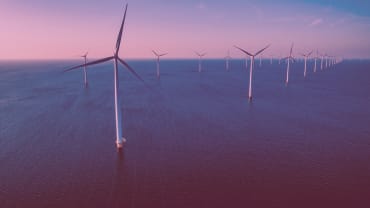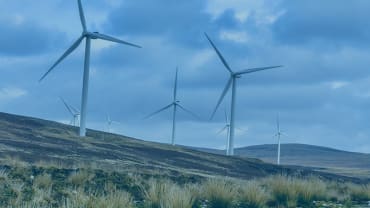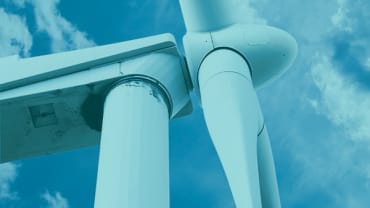On 2 March, the UK Government confirmed that onshore wind and solar will once again be eligible to compete in the Contracts for Difference Scheme (CfD Scheme).
In addition to re-opening Pot 1, BEIS has proposed revisions to the existing technology pots along with other changes to the CfD Scheme. These are set out in the consultation issued by BEIS (CfD consultation).
Let's look at the implications of the Government's proposals for restructuring the technology pots.
Re-opening of Pot 1
(Note that this excludes coal-to-biomass conversions, which BEIS proposes to exclude from the CfD Scheme)
Both onshore wind and solar have fallen in price in recent years and are recognised by many, including The Committee on Climate Change (CCC), as some of the UK's lowest cost forms of low-carbon electricity.
Yet the UK has deployed few new onshore or solar projects since the withdrawal of state aid support four years ago. This, coupled with the introduction of the UK's 2050 net zero emissions target (Scotland's target is 2045), has put pressure on the UK Government to recommit its support to these technologies.
Indeed, several bodies have voiced support for increased deployment of Pot 1 technologies.
The CCC advised in 2019 that, to keep the UK on track to meet its net zero target, the UK's onshore wind capacity should be increased to 22-29GW by 2030 and solar capacity increased to 23-43GW. Currently, capacity for both sits at around 13-14GW each.
In November 2019, RenewableUK predicted that the UK would miss its net zero target by 40% if onshore wind's capacity stalls at 13.5GW.
That same year, the National Infrastructure Commission (NIC) recommended that a pipeline of Pot 1 projects is set out to enable the UK to meet its target of at least 50% of renewable generation by 2030.
The decision to re-open Pot 1 has therefore been welcomed by both the renewables industry and climate groups, who see it as key to unlocking investment and decarbonising the UK's energy supply.
However, in the CfD consultation, BEIS has not set out any proposed budget or capacity caps for AR4. Nor has it stated if any minima or maxima capacity thresholds might apply, or given any firm commitment to more Pot 1 auctions after AR4.
As a result, we don't yet know how the Government intends to divide up the CfD cake between the different technologies. What might BEIS have in mind?
If you take a look at the future illustrative scenarios in the Impact Assessment published alongside the CfD consultation, BEIS assumes deployments of 300MW of solar, 700MW of onshore wind, and 5.5GW of offshore wind.
Of course, BEIS points out that the Impact Assessment should not be regarded as an indication of policy, but it is the only guide currently available. Our article Will the UK's Fourth CfD Auction Chart a New Course? explores this question in more detail.
Adding to this lack of clarity, there have been no proposals to relax current planning policy for onshore wind developments in England, which is likely to mean that it will remain challenging to develop new onshore wind farms south of the border.
Floating offshore wind - a new technology type
Currently offshore wind sits in Pot 2. In AR3 around 90% of CfD capacity allocated in the auction was awarded to fixed offshore wind (representing just under 5.5 GW) with strike prices of around £40 per MW (2012 prices).
The only other technology to be allocated any significant amount of CfD capacity was remote island wind, indicating that other technologies were unable to compete effectively on price.
Although floating offshore wind was not a distinct technology type in AR3, it struggled to compete with fixed offshore wind on price.
Consequently, BEIS has proposed that floating offshore wind becomes a distinct technology in Pot 2.
This enables BEIS to set out a different administrative strike price for floating offshore wind and apply a minima allocation. It also enables fixed and floating offshore wind to participate in the different technology pots. In effect, it provides BEIS with the ability to create a specific floating offshore wind policy.
There is some thinking that floating offshore wind could play a long-term role in the decarbonisation of the UK's energy supply, if cost reduction and scale can be achieved.
A new Pot 3 for offshore wind
BEIS is considering whether offshore wind should become the sole technology in a new Pot 3.
Its analysis is this - fixed offshore projects are generally much bigger and have lower costs than the other technologies in Pot 2, whereas a separate Pot 3 allows more appropriate parameters to be set reducing the risk of suboptimal auction outcomes.
BEIS is also of the view that the introduction of a separate Pot 3 could mean that more budget is allocated to projects that may otherwise be unsuccessful if offshore wind remained in Pot 2.
With the success of AR3, there could be an argument for transferring offshore wind to Pot 1.
Indeed, the NIC recommends that technologies such as offshore wind are moved into Pot 1. Likewise, the CCC is of the view that offshore wind looks increasingly like it can be deployed without subsidy.
It suggests that Government intervention should be in the form of auctioning long term contracts with subsidy-free reserve prices.
This is in line with what is anticipated by BEIS for onshore wind and solar. It expects that these Pot 1 technologies will secure CfDs at strike prices below the average wholesale prices.
This provides revenue stability, which in turn reduces the cost of finance.
However, BEIS says that moving offshore wind into its own Pot 3 reflects the fact that expected costs of fixed offshore wind remain higher than levelised costs for onshore wind and solar, in effect requiring protection from competing with onshore wind and solar.
This is because BEIS considers offshore wind to be strategically important to the UK meeting its net zero emissions by 2050, with a Conservative Party commitment to deploy offshore wind capacity of 40GW by 2030.
It is possible though that creating an 'offshore wind-only' CfD pot risks competition law issues, which is explored in Will the UK's Fourth CfD Auction Chart a New Course?
Reduced energy diversification
One of the original purposes of the pot structure was to secure deployment of a diversified portfolio of renewable technologies, and the CfD consultation confirms that diversification of the generation mix was a consideration in the decision to continue to use different pots in AR4.
Yet, with onshore wind in Pot 1, remote island wind and floating offshore wind in Pot 2 and fixed offshore wind in a new Pot 3, it is possible that wind technologies will dominate AR4 CfD allocations.
Consequently, non-wind technologies may be deprived of subsidy support that would enable them to scale up commercially.
Deploying wind to the exclusion of other technologies will reduce diversity in our renewable generation mix.
There must be a question as to whether this – in the long run – will harm the UK's ability to deliver net zero by 2050. The CfD consultation notes that there is significant uncertainty about how the UK will achieve net zero by 2050.
While we live north of the 50th parallel, wind will play a huge role in decarbonising the UK's energy supply, yet the very nature of wind energy means that other technologies will need to play a part in the UK achieving net zero.
For example, RenewableUK says that wave and tidal stream energy, with a generation profile uncorrelated to wind, could provide capacity of around 30 – 50GW, but it is not mentioned at all in the CfD consultation.
The logical inference is that today's policy, of which CfD is a crucial component, should be balanced, seek to maintain optionality and flexibility, and to enable the UK to design the optimal power system for 2050.
The Government's proposed changes seek to provide a development pathway for floating offshore wind, but what about other technologies?
The Government's approach will, if anything, concentrate energy supply, not diversify it. The CfD consultation does not contain any similar proposals for other technologies that might enhance diversification of supply, such as bio energy and marine technologies.
Views sought for proposed changes
Views on the changes to the pots, as well as other changes to the CfD Scheme, are being sought as part of the CfD consultation which can be found on BEIS' website:
It will remain open until 2345 hours on Friday 29th May 2020.
Contributor
Legal Director












